Greenhouse & Hydroponic System: Wat –U Meng School
Greenhouse
Continuing our school lunch initiative at Wat U-Meng School, this past July our EDventure participants constructed a greenhouse. This compliments EDventure’s mushroom house, which 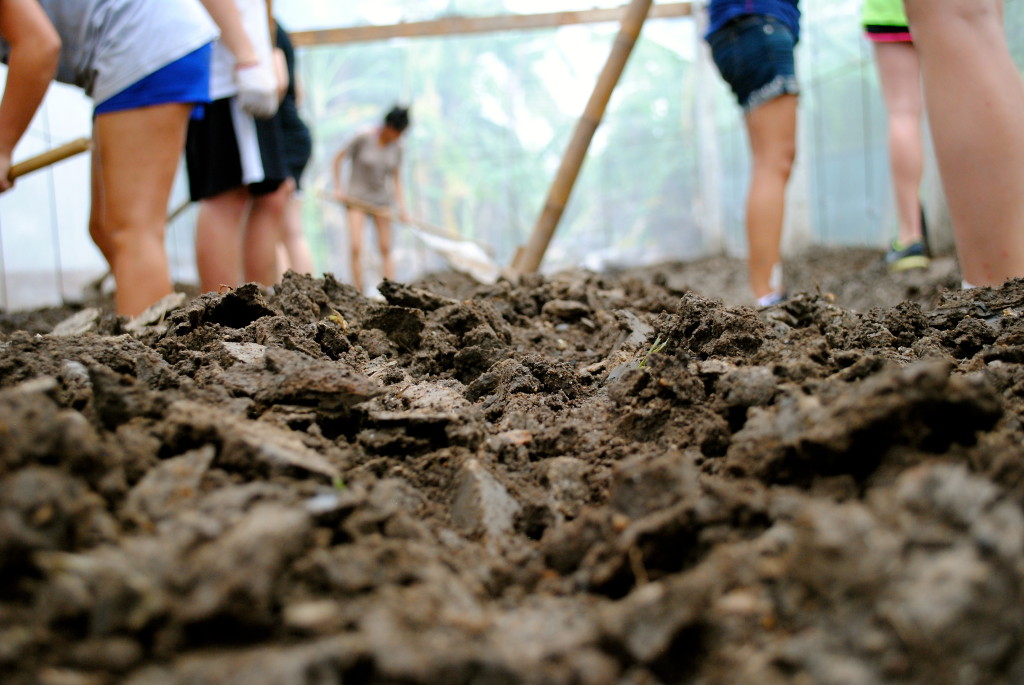 was built in June, by providing the students with a mo are varied lunch diet and creating an opportunity for the school to purchase much needed school supplies, instead of over priced vegetables and herbs from the local markets. The project began in order to improve the economic uncertainty at the school. Due to the small size of the school it prevents them from receiving government aid. They are currently unable to provide students with lunches as well as many school supplies and are on the verge of closing. Without immediate action taken the school will be forced to close and students will either need to pay more money to attend schools further away or simply will not continue to attend to school at all.
was built in June, by providing the students with a mo are varied lunch diet and creating an opportunity for the school to purchase much needed school supplies, instead of over priced vegetables and herbs from the local markets. The project began in order to improve the economic uncertainty at the school. Due to the small size of the school it prevents them from receiving government aid. They are currently unable to provide students with lunches as well as many school supplies and are on the verge of closing. Without immediate action taken the school will be forced to close and students will either need to pay more money to attend schools further away or simply will not continue to attend to school at all. 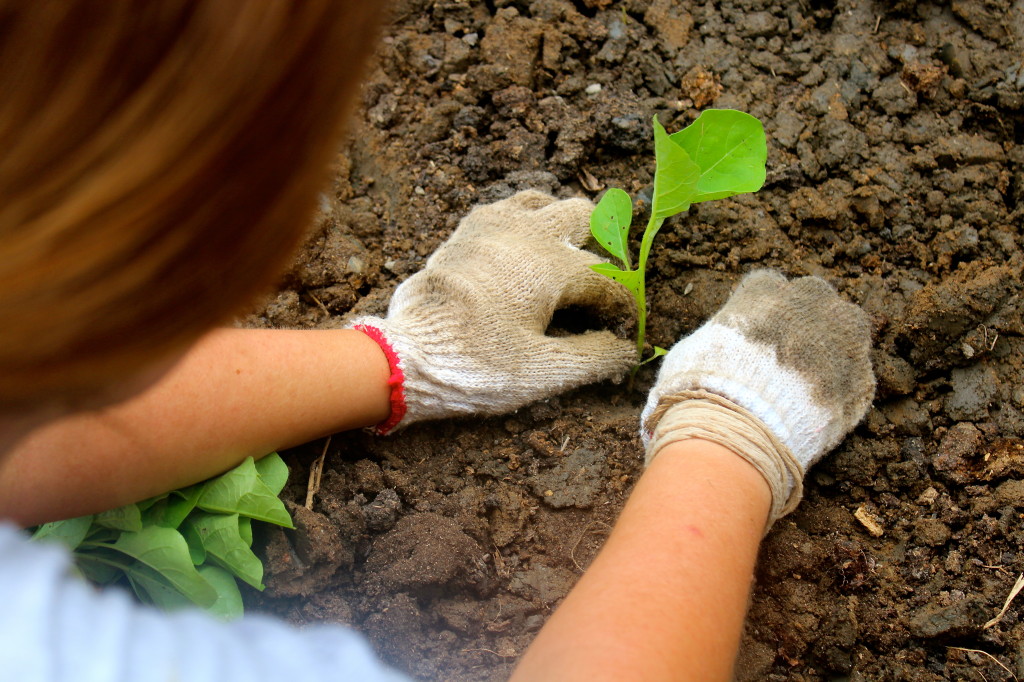 The greenhouse is able to empower this school community by providing the student lunch program with a variety of fresh vegetables, such as, morning glory, eggplant and white and purple cabbage. Similar to the mushroom house, the greenhouse provides more vegetables than is needed for the lunch program. Therefore, the remaining vegetables are sold at the local market to provide the school with additional income. The profit is then used towards securing other resources that they do not otherwise receive funding for. A massive thank you for all of the hard work and time put into this project by our EDventure participants to make a positive impact within the Wat U-Meng School community.
The greenhouse is able to empower this school community by providing the student lunch program with a variety of fresh vegetables, such as, morning glory, eggplant and white and purple cabbage. Similar to the mushroom house, the greenhouse provides more vegetables than is needed for the lunch program. Therefore, the remaining vegetables are sold at the local market to provide the school with additional income. The profit is then used towards securing other resources that they do not otherwise receive funding for. A massive thank you for all of the hard work and time put into this project by our EDventure participants to make a positive impact within the Wat U-Meng School community. 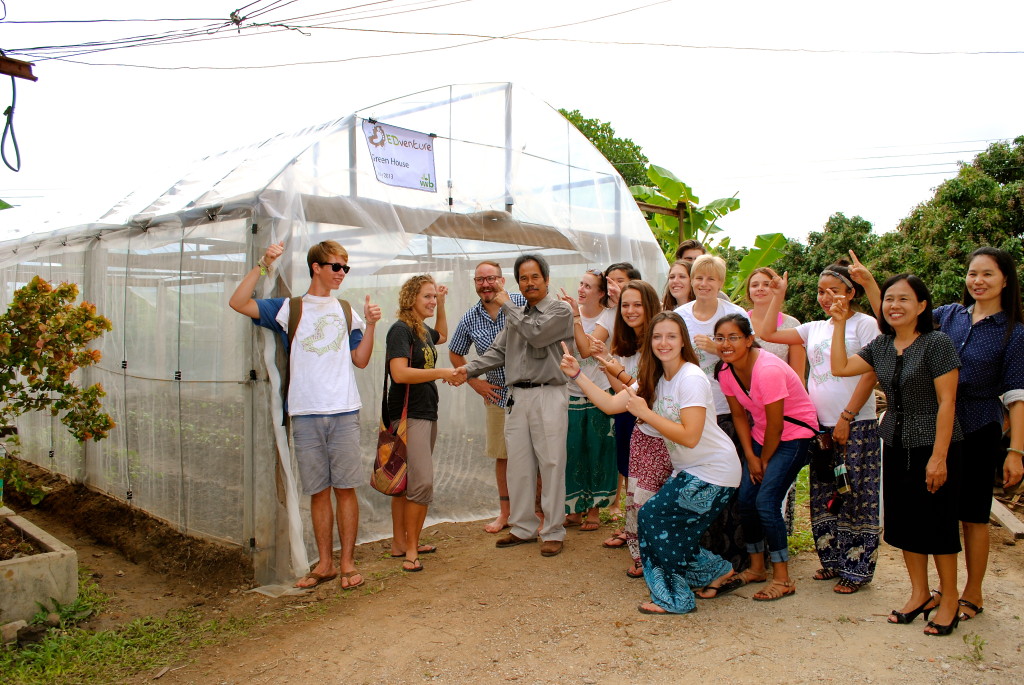
Hydroponic System
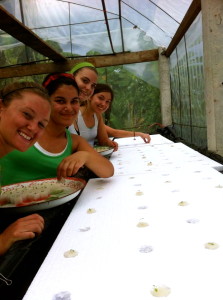 Adding onto the July greenhouse project, this past August’s EDventure participants built a hydroponic system to continue with the School Lunch Initiative at Wat U-Meng School in San Patong Village, Thailand. The hydroponic system compliments the greenhouse by adding another level, which creates more space for vegetation to grow, thus providing the school with even more vegetables to include in the school lunch program, as well as, sell in the local markets. By completing these three projects (the mushroom house, the greenhouse and the hydroponic system), the school now has enough alternative funding to provide the students with a more varied and plentiful lunch, as well as, a substantial amount of materials and resources, therefore preventing the school from closing and forcing students to travel further to attend school.
Adding onto the July greenhouse project, this past August’s EDventure participants built a hydroponic system to continue with the School Lunch Initiative at Wat U-Meng School in San Patong Village, Thailand. The hydroponic system compliments the greenhouse by adding another level, which creates more space for vegetation to grow, thus providing the school with even more vegetables to include in the school lunch program, as well as, sell in the local markets. By completing these three projects (the mushroom house, the greenhouse and the hydroponic system), the school now has enough alternative funding to provide the students with a more varied and plentiful lunch, as well as, a substantial amount of materials and resources, therefore preventing the school from closing and forcing students to travel further to attend school. 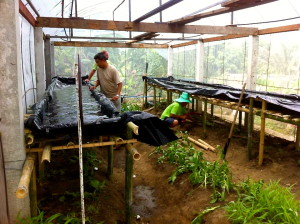 A brilliant joint effort between VWB, EDventure International and a great bunch of motivated people to achieve the best outcomes for this community.
A brilliant joint effort between VWB, EDventure International and a great bunch of motivated people to achieve the best outcomes for this community.
Expenditure
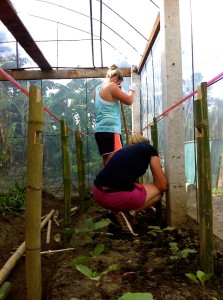
| Item Description | Qty | Unit Price | Total | |
| 1 | Injection molded foam tray 60*90 cm. | 24 | 100 | 2,400 |
| 2 | pH. Meter 0 - 14 | 1 | 2,200 | 2,200 |
| 3 | คลิป Clips | 11 | 50 | 550 |
| 4 | ลวด Wire | 1 | 200 | 200 |
| 5 | ฟองน้ำเพาะเมล็ด Sponge for seeding | 1 | 150 | 150 |
| 6 | Transparent plastic sheet mixed UV (150 micron thick,3 m.width) | 2 | 900 | 1,800 |
| 7 | Black plastic sheet mixed UV ( 120 micron thick,2.4 m.width) | 2 | 500 | 1,000 |
| 8 | Insect net containing UV No.32 ( 1.10 m.width ) | 3 | 900 | 2,700 |
| 9 | ชุดระบายน้ำ the drainage set | 2 | 650 | 1,300 |
| 10 | กล้าผัก Vegetable seeds | 1 | 50 | 500 |
| 11 | สายส่งน้ำ P.E.พร้อมหัวจ่ายน้ำ 2 ทาง P.E. hose coupling | 1 | 250 | 250 |
| 12 | 200 litre of water container without cover | 1 | 300 | 300 |
| 13 | ปั๊มน้ำ # 2500 Water pump No.2500 | 2 | 380 | 760 |
| 14 | เหล็กโครงสร้าง Main Structure steel | 1 | 6,400 | 6,400 |
| 15 | 1 Gallon of nutrient solution typeA and B | 10 | 400 | 4,000 |
| 16 | ถาดเพาะ Seeding tray | 4 | 60 | 240 |
| 17 | ค่าแรงช่าง Wage worker | 1 | 4,000 | 4,000 |
| 18 | ไม้ไผ่ Bamboo pole | 50 | 25 | 1,250 |
| Total | 30,000 |
Total USD = $956 AUD = $1071 CAD = $991

